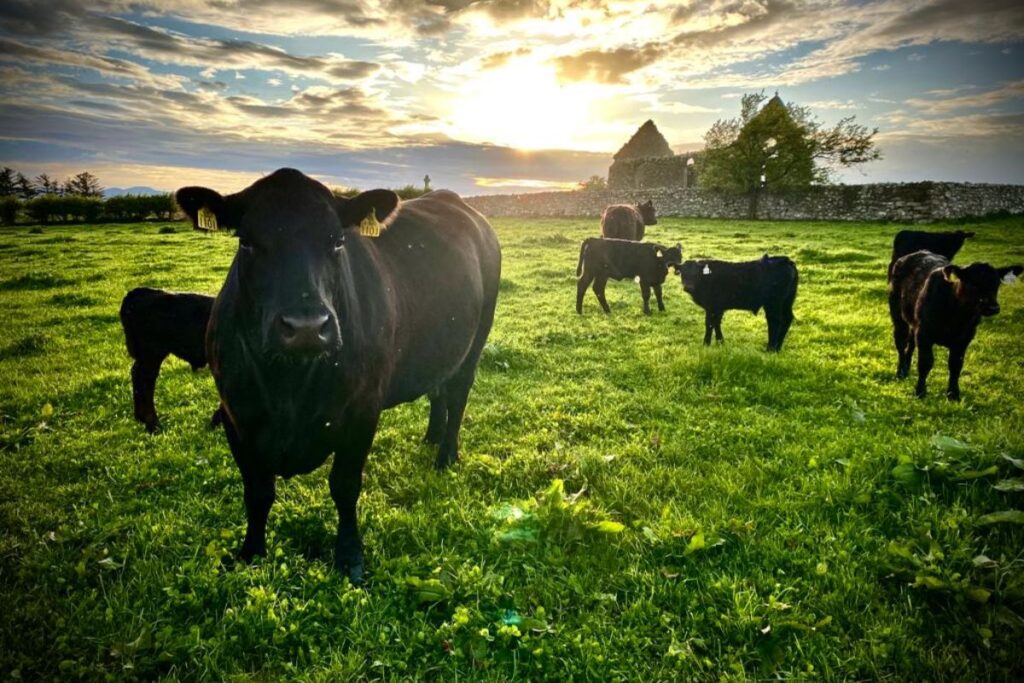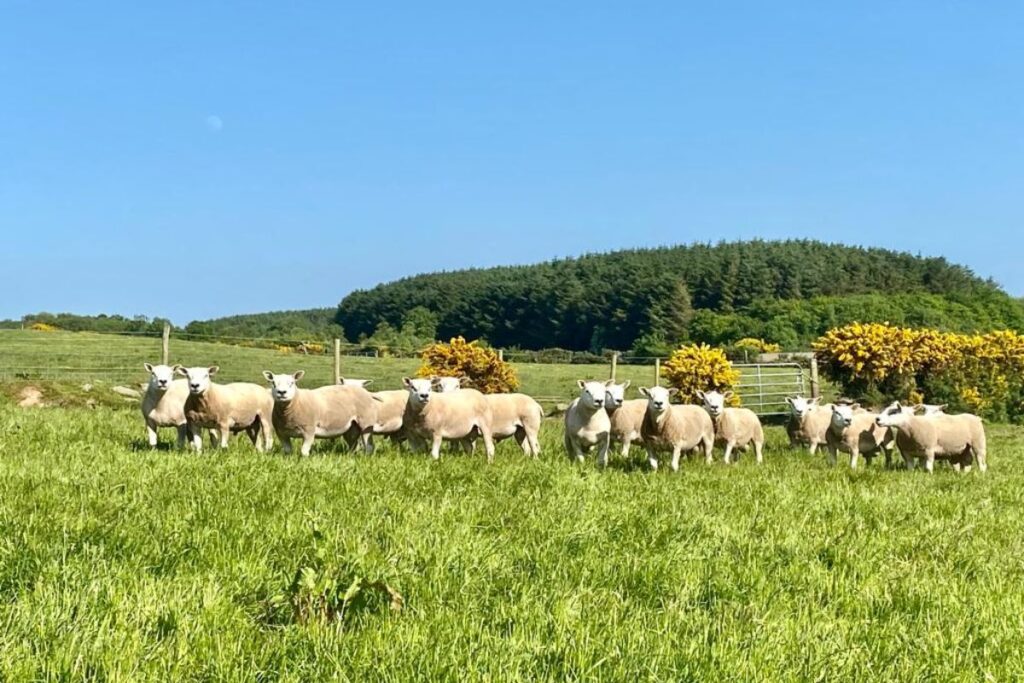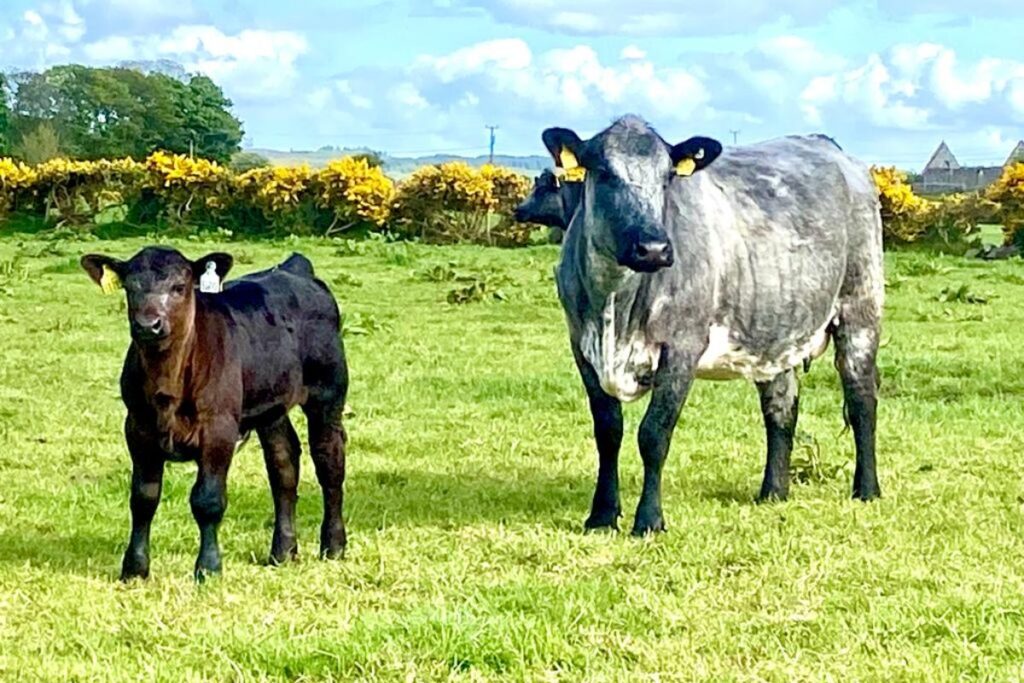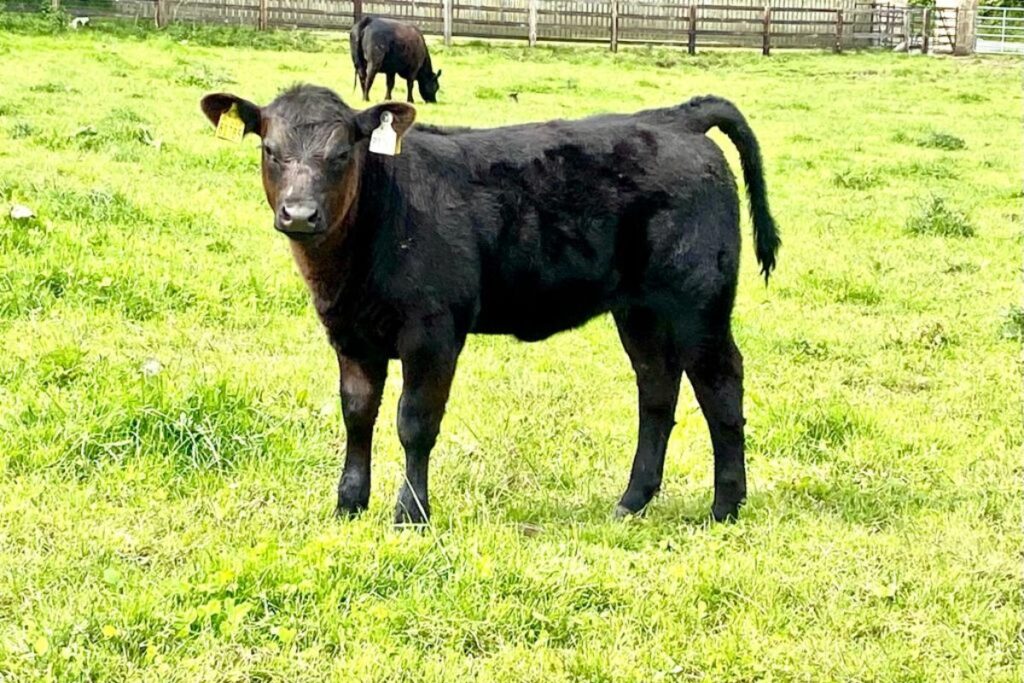That’s Farming editor, Catherina Cunnane, catches up with Stuart Mc Keague, Claggan, Culdaff, County Donegal in this week’s Farmer Focus series, following this interview.
“I farm in partnership with my father, Billy. We run around 70 commercial Angus suckler cows and 25 pedigree Angus cows, with the pedigree side of things building year-on-year.
We finish all progeny on-farm as well as about 40 dairy-bred calves annually, mainly off grass.
Besides, we have a commercial sheep flock of Belclare-cross ewes that lambs outdoors in late March; however, they are due to be dispersed this year as they are too sore on my grass in the spring when I am under pressure.
We also have a pedigree Texel flock which was established about 25 years ago. We would normally sell most of our rams at the Donegal Texel Breeders’ sales in Raphoe that take place in the autumn.
I suppose the main difference between what we do and what others do is that we completely concentrate on commercial traits and ignore show trends such as heads, colouring etc.
In a commercial world, if it does not weigh, it does not pay, so, instead, we concentrate on length, conformation and correctness – the traits commercial sheep farmers desire.

Zero meal feeding
This year, we are taking a different approach, which is zero-meal feeding. This year’s shearling ram crop will be the first to be entirely reared on grass with no creep as lambs, no tyfon, meal, or any other supplements are being used.
In the past, rams would have been well grazed over the winter, and then meal would be introduced in May, starting at half a kg and building steadily as we near sale time.
Last year, it cost me €80 a head to feed over this four-month period. This is not a knee-jerk reaction to increased meal costs, but instead, I feel the benefits it will pass on to our customers will be instantly noticeable.
While this year’s rams will inevitably be slightly smaller, they will be fitter, more active and much less likely to succumb to issues such as lameness or pneumonia.

Excessive feeding
Typically, when someone buys a ram at a sale, they take him home to ‘slim him down’ for a month before he goes to work.
So, this ram that has been pushed mercilessly hard for months gets a new address and goes from approximately 2 or 3 kg of highly formulated meal per day to a bare run with no concentrates and very little grass.
Then a few weeks later, he is expected to cover, say, 4 or 5 ewes a day for a 2 or 3-week period.
This puts your ram under a lot of stress which is a huge contributing factor to ram mortality.
In both cattle and sheep, excessive feeding of a high starch diet is very bad for the feet and causes issues such as laminitis.
What people are not as aware of, however, is that you can do unseen damage that may not become apparent until a few years down the line.
So, my aim is to produce rams capable of covering more ewes from day one but also rams that last longer and give less bother to their new owners.
We usually start selling rams in mid-August, so I suppose we will find out then if the market is ready for this approach.

Angus cattle
As for cattle, we are trying to use more natural fleshing genetics with the purchase of Fordel ez King Louie and HW Farquar in the past few years.
Both these bulls would have a heavy influence of American genetics in their pedigrees, and the Angus breeders out there would recognise bulls, such as Stockman 365, SAV Harvestor and Sitz Upward, in their backgrounds.
These genetics are proven to work in a large-scale commercial world where forage conversion is vital.
With the intention that they will breed easier finished cattle that will finish off grass or silage alone at a younger age, and with climate change being all the rage at the minute, this will become more and more important in the not-so-distant future.
The other plus point is that Angus cattle offer calving at 24 months, which means this year’s calf crop will be the dams of the 2025 crop, which speeds up genetic advancement massively.
Suckler farming is challenging enough without waiting 36 months for your first calf.
Calving ease
The bulls we produce mainly go to dairy herds, so calving ease is key here. Good feet and legs are also very important as they have a lot more walking to do daily than a bull in a typical suckler herd.
From a personal perspective, carcass weight is something I like to keep an eye on with some of this year’s calves being close to three times the breed average for this.
The dairy farmer will have to accept that while calving ease is important to them, a financially viable calf is important to the farmer that buys their calves.
We are in a nice position now of having a lot of repeat customers, with many dairy farmers booking their next bull up to 6 months or a year in advance, as they seem to like the natural condition the bulls come in.
Like with the rams, an overfed bull will struggle when given a big workload.
Breeding programme
Our breeding programme is evolving as we use more AI than in the past to broaden our genetic base.
This year, we have calves from bulls such as Fordel Ben Maree, Coonamble Elivator and Jeremy Eric Of Bridgefoot, who is an oldie but a goodie. The one thing all these bulls have in common is calving ease.
When someone buys an Angus bull, this is what they expect, and as most of our calving occurs outside, it is vital for me too.
This year, we have used sexed heifer semen on a few cows in the hope of breeding quality females; perhaps, in time, I will look at male-sexed semen as well.
Currently, we are waiting on the last few cows to calve as we had a bull go infertile last year, and this has caused a prolonged calving period.

Grassland management
Grassland management in both systems is key, and while I would not say I am particularly good at it yet, I feel I am improving year-on-year.
We bought a trailing shoe a few years ago through TAMS, and it has been a game changer in terms of grass growth as it produces a thicker, denser sward of grass than the splash plate used, thus cutting down on our fertilizer usage.
This year, we cut our first cut silage on May 22nd, 2023, which was the earliest we have ever done it.
Good silage is very important for my system as Angus cattle do not, in my opinion, perform as well on meal as they do on forage, so quality here is vital.
This spring, 30-acres of new grass was put in at a rate of 14 kgs grass, plus 1kg of white clover to the acre. Then, this received 150 kgs of 10: 10: 20 and 100 kgs of Ground Lime per acre.
Reseeding, while expensive at the time, pays for itself very quickly. It is, however, struggling from lack of rain at present.
Reflection
I suppose I will just keep doing what I am doing, trying to improve on efficiency and performance year-on-year.
Sometimes, I will get it right; sometimes, I will not, but I think the key to improvement is, to be honest with yourself and accept your mistakes.
Ten years ago, we started changing cow type, and Angus cattle were not as popular as they are today.
But after some research, I decided they ticked all the boxes: a smaller cow, easier kept, docile, excellent milk and fertility.

Rugby Club
Outside of farming, I am the captain of Inishowen Rugby Club, the most northern club in the country, and this has been a big year for us, having won back-to-back league titles and opening our new clubhouse on our 50th anniversary.
I find the game a great break from the routines of farming and a chance to meet new people.
As for the future of farming, I feel we have to embrace these new environmental incentives as that’s the way things are going.
With climate change and other external pressures on agriculture increasing, efficiency is going to be key going forward whether you produce beef, milk or grain.”
To share your story, email – [email protected]





